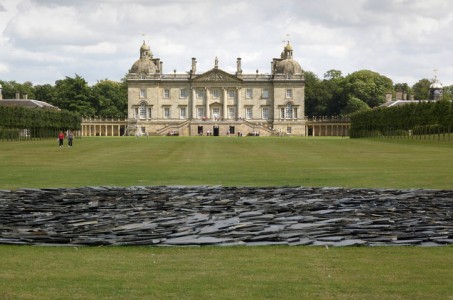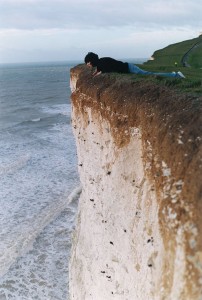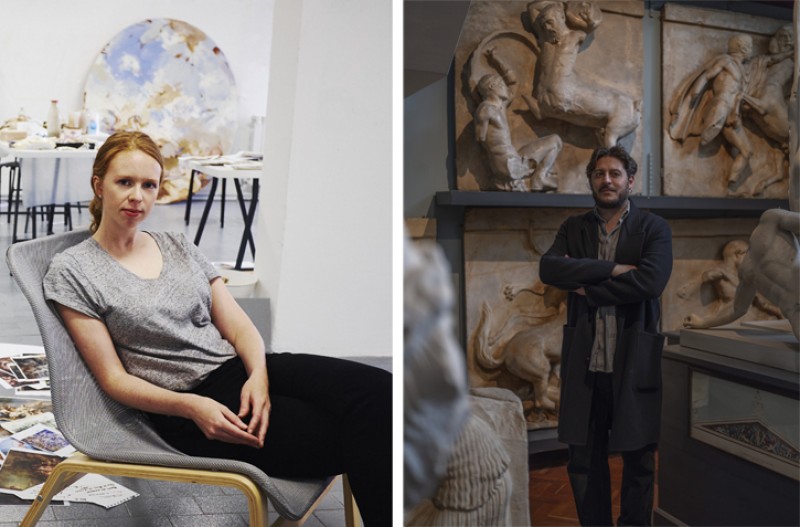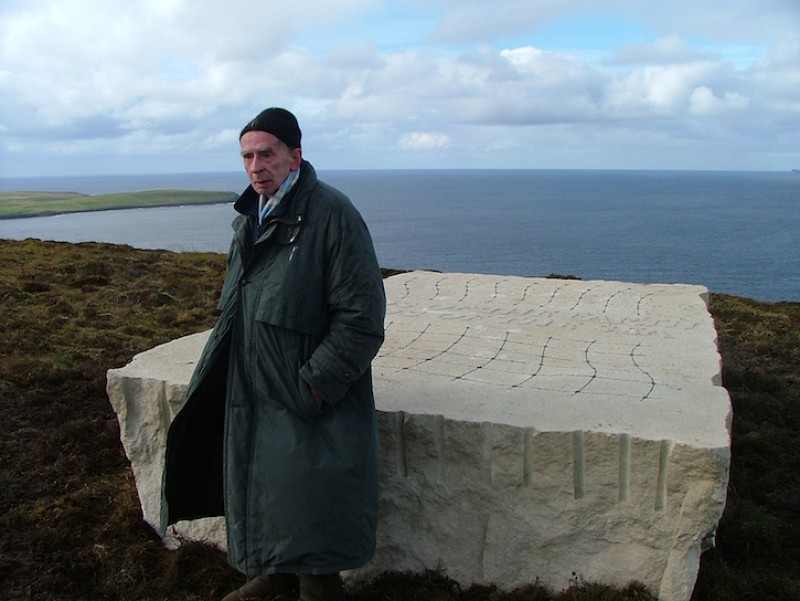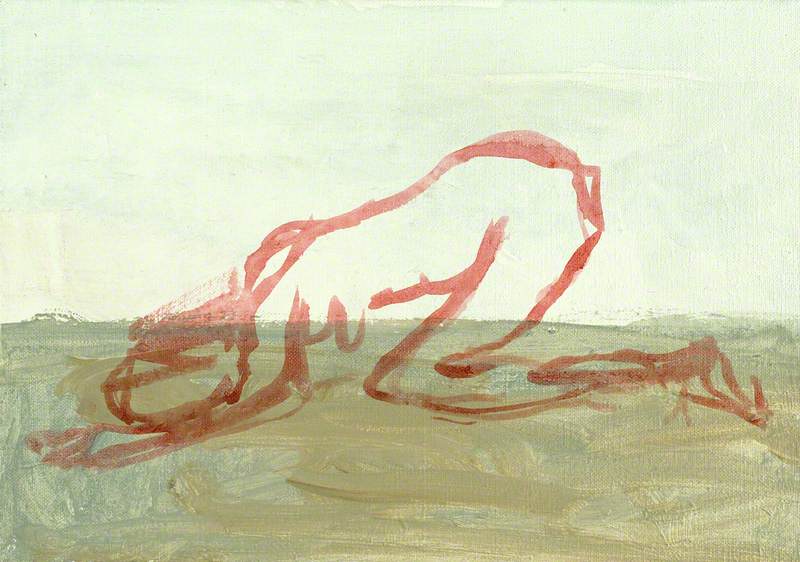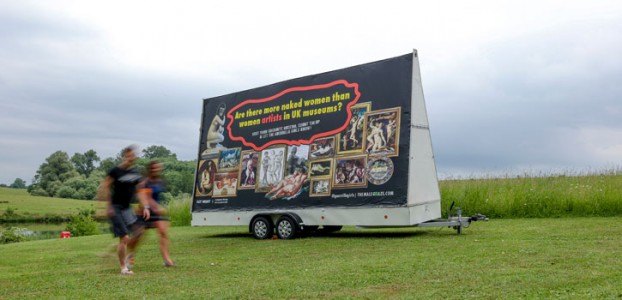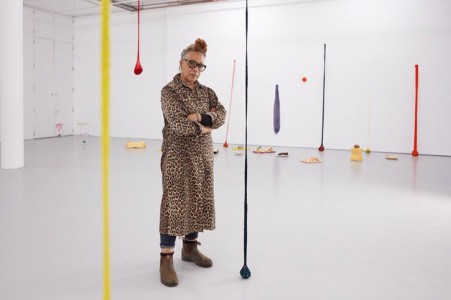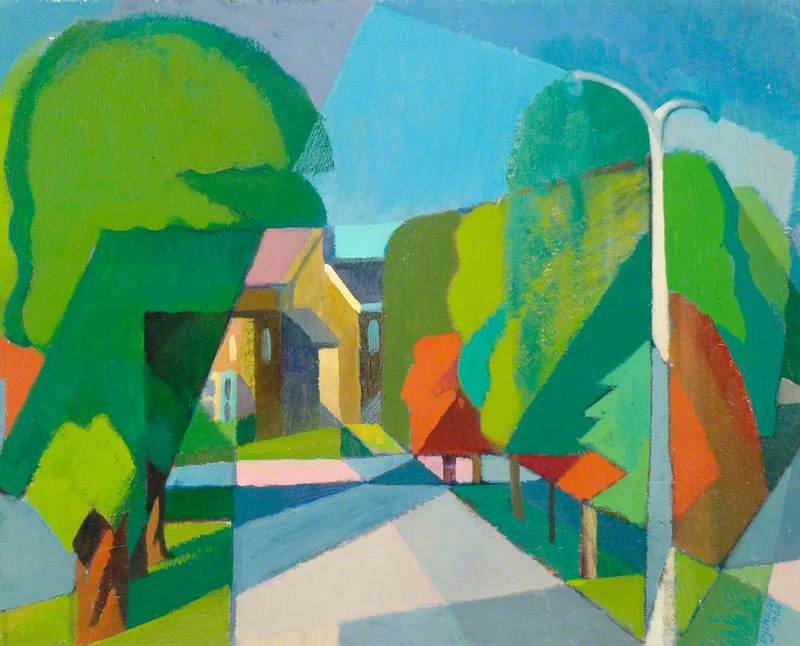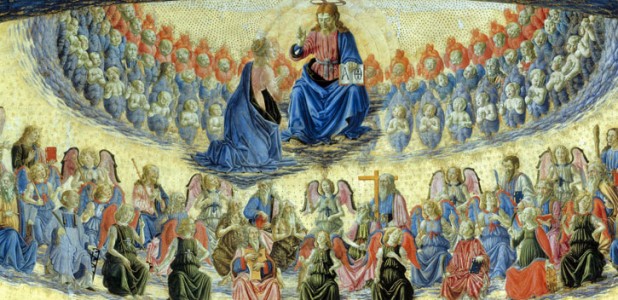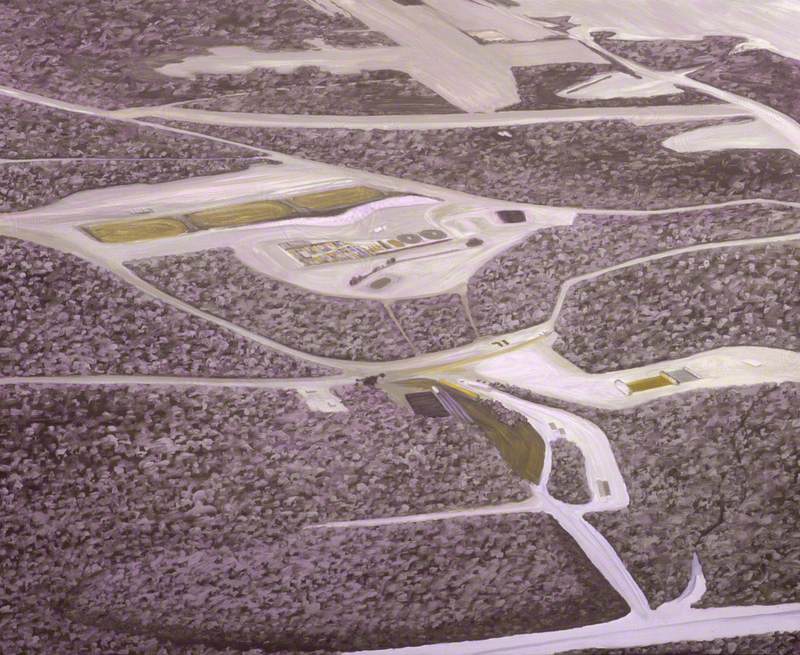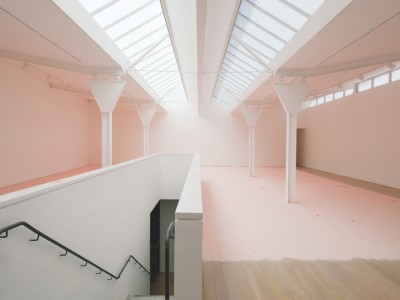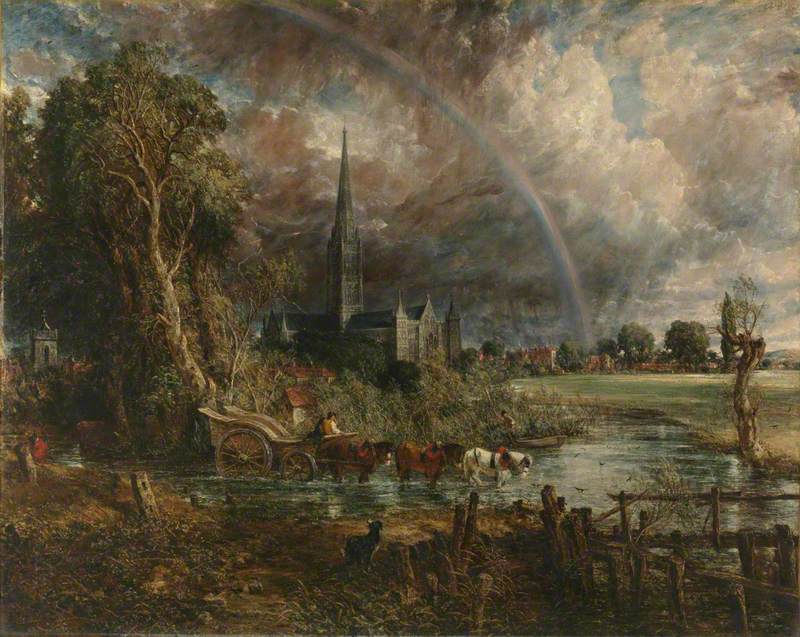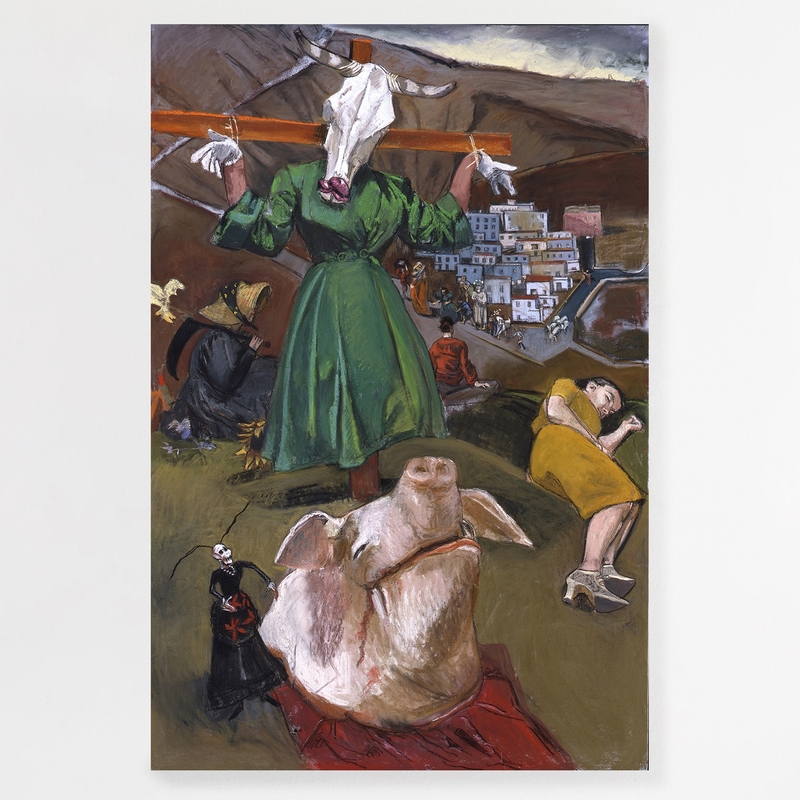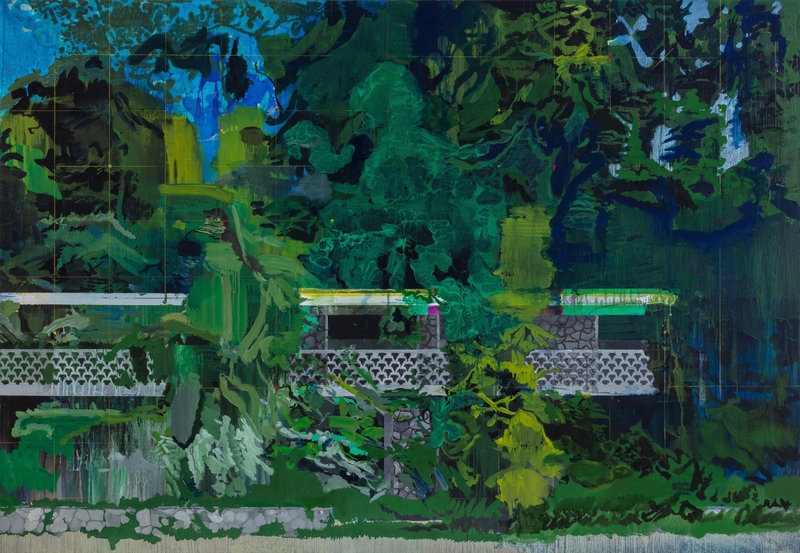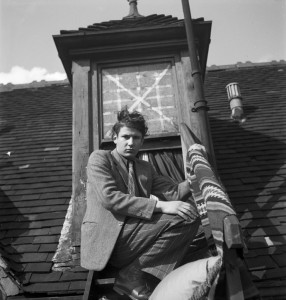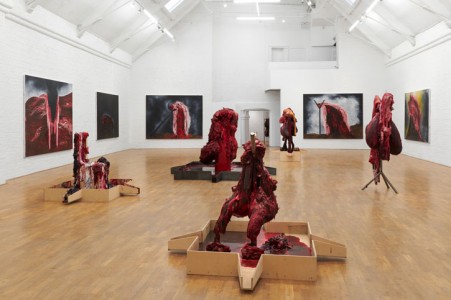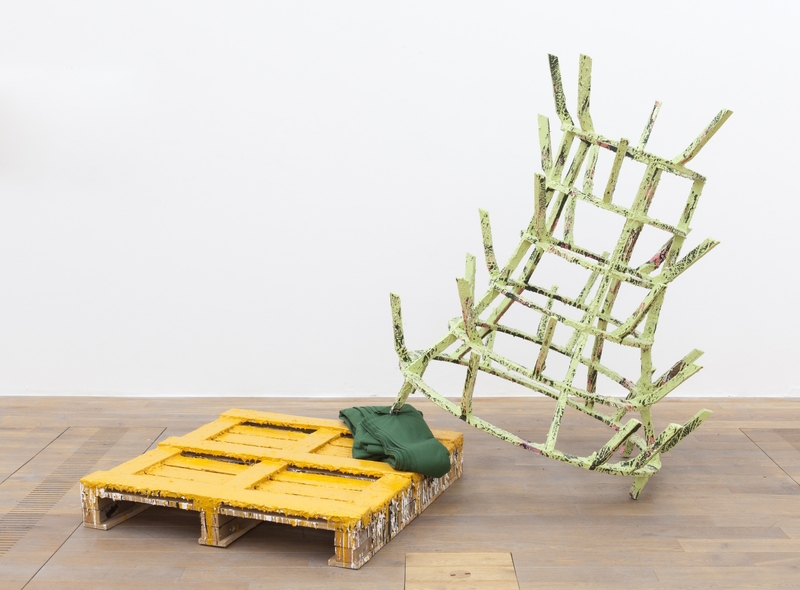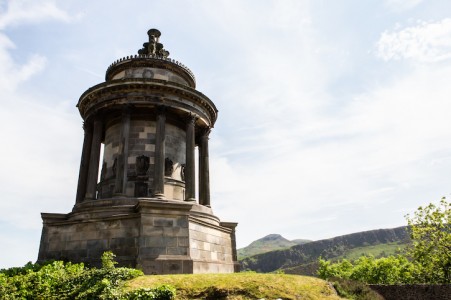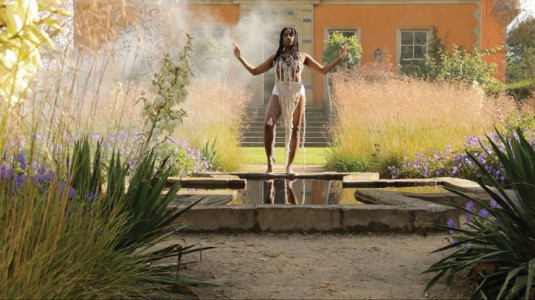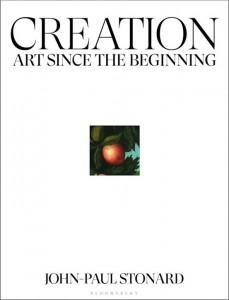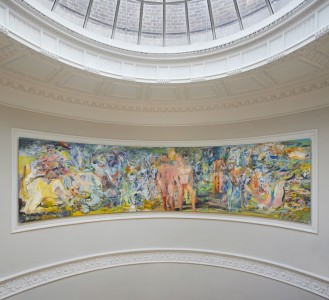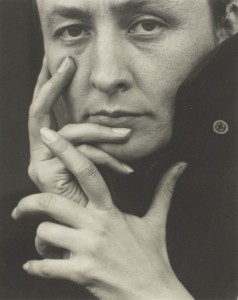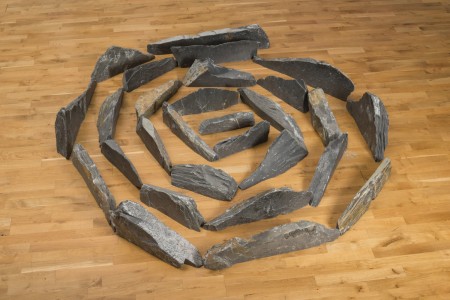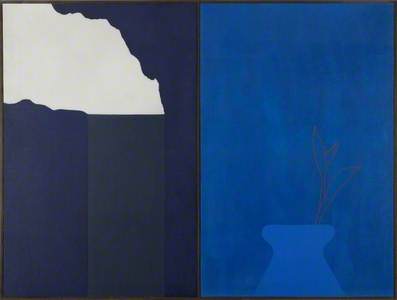Over the past year, many of us have found a renewed awareness of our connection with the planet we live on, which has often brought comfort in the face of isolation and fear. The exhibition 'Earthbound: Contemporary Landscape from the Roberts Institute of Art' at the Millennium Gallery, Sheffield is a collaboration between the Roberts Institute of Art and Sheffield Museums, bringing together works from the David and Indrė Roberts Collection and Sheffield's own collection of visual art.
The show is framed by Sheffield's long history of working with the natural environment and the impact the landscape has had on the life of the city, from the geography that gave rise to the eighteenth-century steel industry to the social housing that marked the skyline during the 1950s and 1960s.
The New Picturesque (Johnstone Castle)
2008, acrylic on canvas by Cyprien Gaillard (b.1980) 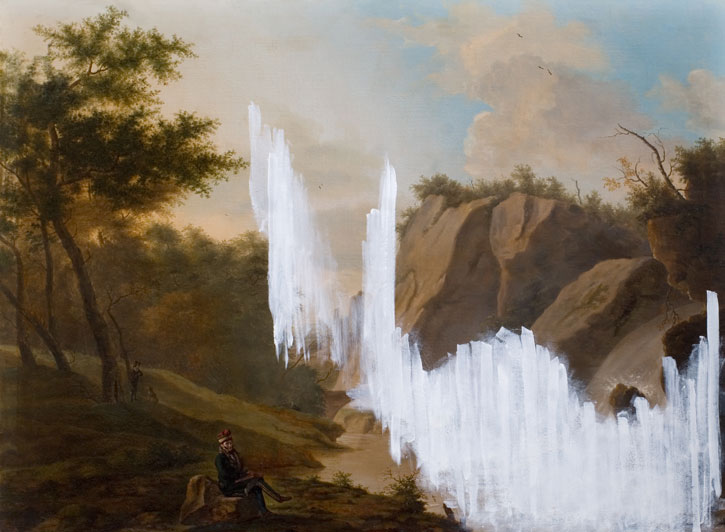
The artworks in 'Earthbound' make manifest connections with the earth and how we live on it. They think through issues such as idealised visions of the landscape, our extractivist practices and the impact of colonialism, through to the human tendency towards self-destruction. Through these varying perspectives on how we see the world, a web can be drawn that makes apparent the world around us.
West (Sunset in My Motel Room, Monument Valley, January 26, 2007, 5:36–6:06 PM)
2007, installation by Spencer Finch (b.1962) 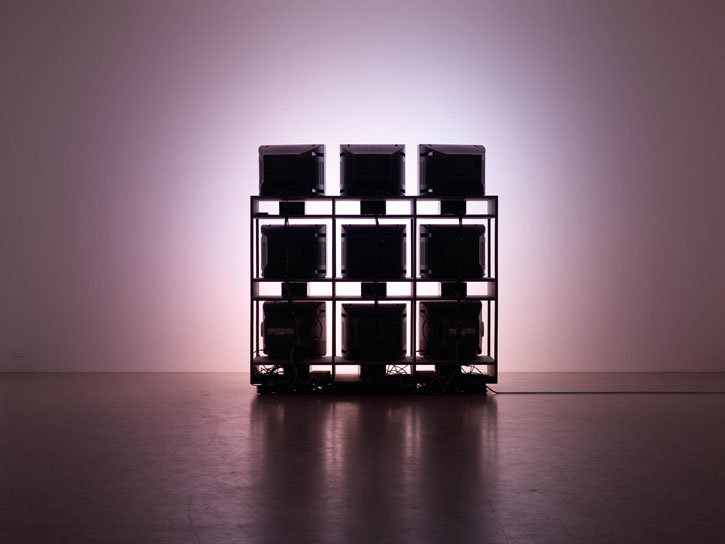
In American artist Spencer Finch's work West (Sunset in My Motel Room, Monument Valley, January 26, 2007, 5:36-6:06 PM) from 2007, the artist explores the way the landscape of the American West relates to cinema and the idea of 'Manifest Destiny' that is the cornerstone of the American Dream.
The work is made from nine screens, each facing the wall in rows of three by three – on each screen is imagery from John Ford's Western The Searchers. As the images change, the light emitted and reflected off the wall give the effect of a sunset and, as the title suggests, one the artist experienced in Monument Valley, which is also where The Searchers was filmed. Finch plays with the epic nature of the Western genre, filmed in Technicolour and VistaVision, but also the ubiquity of the sunset. He points to the sublime experience that can be conjured by the human imagination whilst critically engaging with the role cinema played in the colonisation of the American West.
West (Sunset in My Motel Room, Monument Valley, January 26, 2007, 5:36–6:06 PM)
2007, installation by Spencer Finch (b.1962) 
The work of British artist Richard Long is synonymous with the landscape: he is a pioneer of Land Art, often travelling to remote places to create his works that relate to time, space and distance. His 1981 work Delabole Spiral was created using slate from the Delabole quarry in Cornwall, the oldest working slate quarry in England.
He places the slabs of slate in a neat geometric spiral, which contrasts with the jagged rough material of the slate, suggesting human interventions into the natural landscape. The extraction of materials speaks to the deep relationship we have with the raw resources of the planet, and seen in this context we can better understand them as a part of the earth, rather than, say, just a construction material.
Moving away from conceptualising the landscape as a space within our imagination, British artist Helen Chadwick's work is often interested in the bits of bodies that are beautiful and disgusting. Chadwick's influence in this area can be seen in the artists she taught in the 1990s: she is often thought of as the 'mother' of the Young British Artists (a group led by artists such as Tracey Emin, Damien Hirst and Sarah Lucas), especially when those artists made work relating to bodily representation and revulsion.
Piss Flowers
1991–1992 (2006), sculpture by Helen Chadwick (1953–1996) 
Chadwick's Piss Flowers is a set of twelve bronze sculptures painted white, created by casting the interior of spaces left behind after the artist and her male partner urinated in the snow. The female urine has created a deep cavity in the snow while the male urine has created the outline of the 'flowers'. The repulsiveness attached to bodily functions – such as urinating, defecating or vomiting – bring to mind the terms 'natural' and 'unnatural'. Maintaining this dichotomy might contribute to our disenfranchisement with the planet.
Lost II
2007, installation by Berlinde De Bruyckere (b.1964) 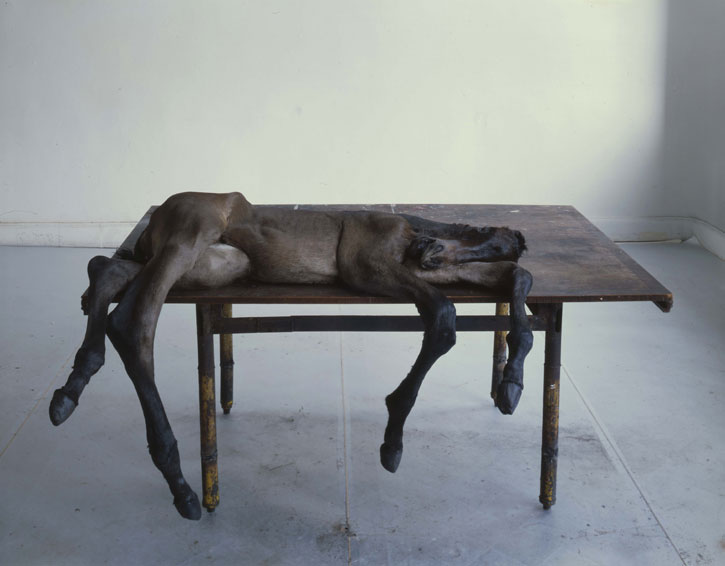
Berlinde De Bruyckere's work sits between two worlds: one of flesh, blood and bone and other physical elements like the soil and wood, the other a world just out of sight, as if behind a curtain. The Belgian artist's 2006 work Schmerzensmann I is an imposing iron column with a figure perched on top, perhaps once celebrated but now fallen from grace. The form appears vulnerable and violated, the skin stretched and broken.
Schmerzensmann I
2006, sculpture by Berlinde De Bruyckere (b.1964) 
The title takes its name from the German for 'man of sorrows' (or suffering), and this pathos is illuminated through the pallid, limp, waxy skin of the figure. The skin hints at the vulnerability of the world that has built us and that nourishes us, one that has a fragile balance that is sadly tipping into extremes. The figures from De Bruyckere's Schmerzensmann series reflect both on the mislaid belief that humans are masters of their world and the fall from grace that may precipitate this fallacy.
The work of American artist Theaster Gates emphasises the social necessity of community and combines this with the visual expressions of emancipation. Two Square (2011) is a work that reflects the artist's family history in construction (his father was a roofer by trade). The materials used are commonplace in the construction industry. In the work, however, they are abstracted, brought into the imaginary, psychological realm of the human mind.
Black Square
1915, oil on linen by Kazimir Malevich (1879–1935) 
Gates also situates this work within the history of art, appearing to reference directly Kazimir Malevich's Black Square of 1915. The surface of Malevich's painting has begun to crack and break up, making it appear like a topographical landscape from above. Gates' insertion of his own practice into this historical narrative is a provocation to re-evaluate the priorities of contemporary art and to question the role of art in society.
'Earthbound' as a title might suggest we are restricted to the planet and bound by its perimeter, but perhaps it is better to think of our relationship to it as a bond that is intrinsic: we have been created precisely to live on this planet with all its abundance and we should therefore think about the care it requires to make the most of our relationship with it.
The works in 'Earthbound' are varying in style, intent and application, but all share a vision of the world that carries with it a bond with the earth as a planetary space and a natural home. Considering the earth as a home is a crucial factor in trying to reconnect and learn again how to care for and be a part of the delicate ecosystems that make up the planet.
Ned McConnell, Curator, the Roberts Institute of Art

